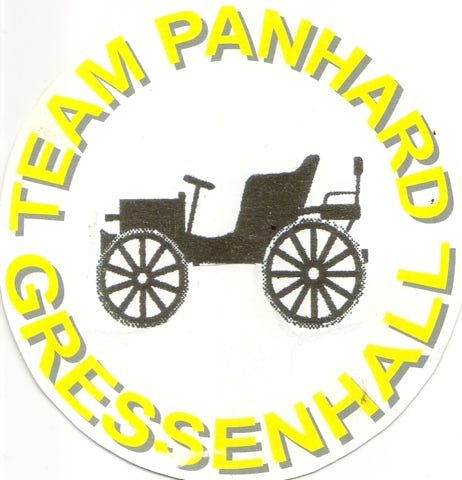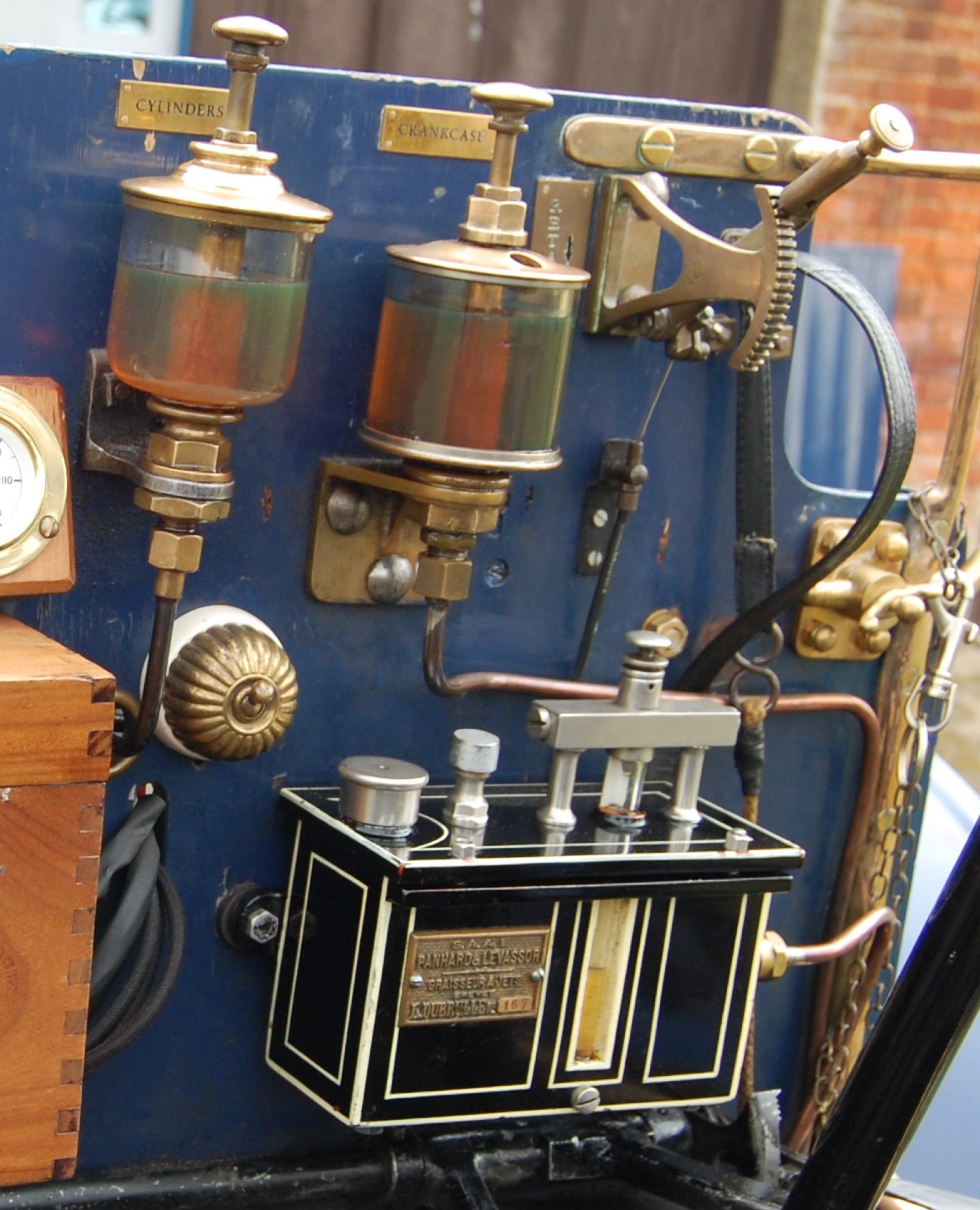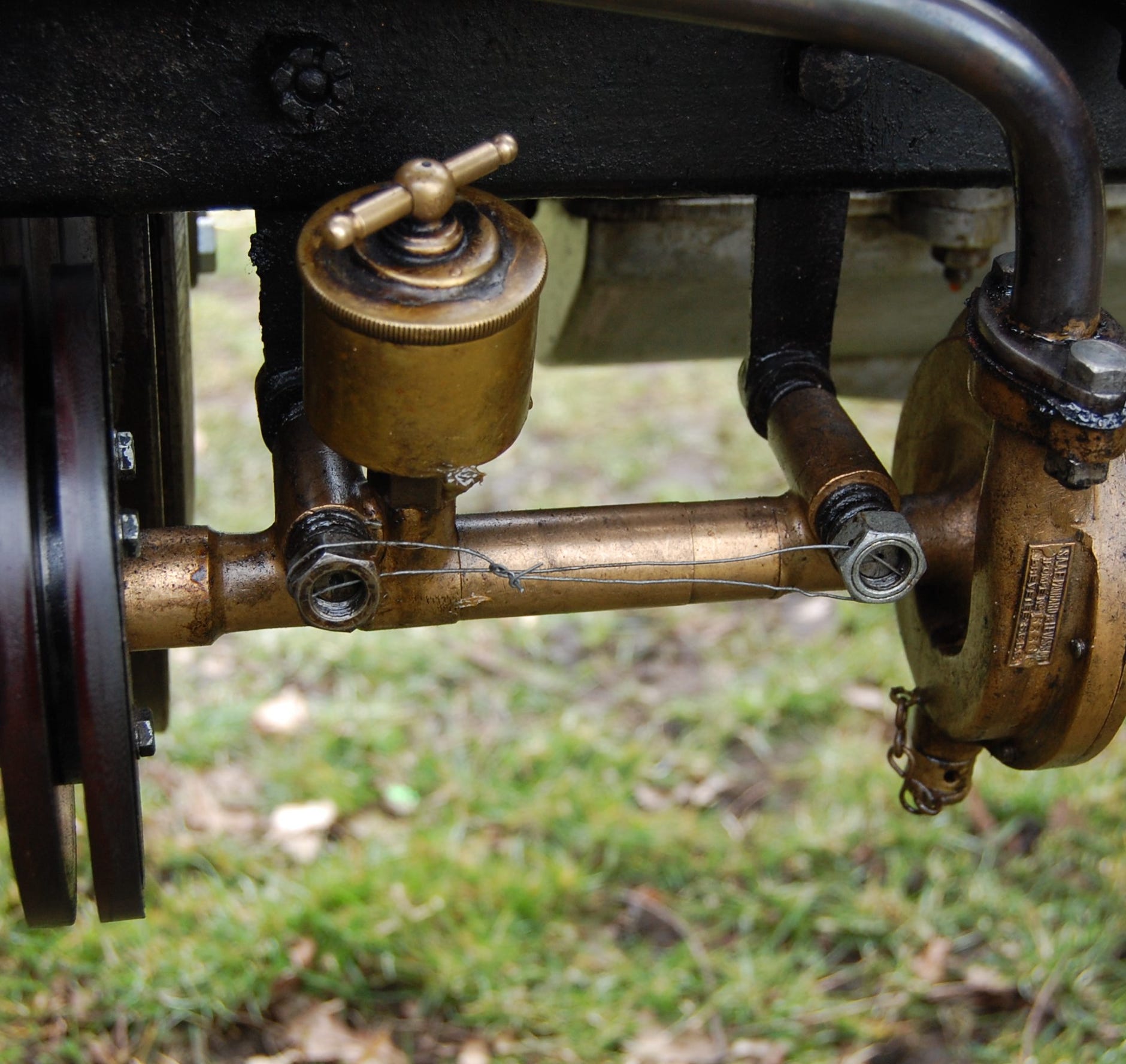
Lubrication and Cooling



Engine lubrication
The lubrication system for the engine does not have a recirculating pump like later cars. The system is ‘total-loss’, that is, the oil does not get circulated but just drips from the bottom of the sump. The sump does have a small quantity of oil in it, so there is some splash lubrication from the con-rods dipping in as they rotate. Initial oiling is by hand plungers on the bulkhead which are used prior to starting (and intermittently on longer journeys). There is also a belt driven drip-feed system, also on the bulkhead, which feeds oil down pipes that lead into the engine.

Oilers on bulkhead
Cooling
The engine cooling system has the cooling water circulated by a mechanical pump (in this case driven by a friction wheel running against the periphery of the flywheel) through the engine and radiator. There is no fan. The current radiator is at the front of the car, but this wasn’t the case originally. As built, the car would have had a radiator under the back of the car and a rather larger water tank also at the rear. Sometime (probably around WW1), the radiator was replaced by one from a Belsize motor car, and this is how it was when presented to the museum. This was in very poor condition, so a decision was taken to build a new radiator to a style that would have been fitted if the car was a year or so younger. This was a finned tube system fitted to the front of the car. The cooling efficiency is much improved but a larger water tank would be beneficial.

Water pump driven off flywheel
Page updated
Copyright Team Panhard
2024